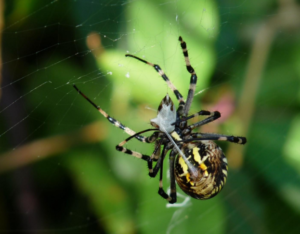 Figure 1 — A female specimen of Argiope bruennichi wraps her prey in silk. (Courtesy of Lucarelli, Wikipedia)
Figure 1 — A female specimen of Argiope bruennichi wraps her prey in silk. (Courtesy of Lucarelli, Wikipedia)
At the beginning of this journey I knew little of natural composite materials, much less the applications of these types of resources. At first glance, this small project seemed quite demanding. Therefore, I attacked it the only way I saw fit, I referenced the infinite glossary of information, the World Wide Web.
From a Composite Material discussion, I learned that one of the most durable, tough, and overall lightweight natural composites is wood. This is where my search began. I started with looking up the different types of wood for construction. From my research, I found an average of 17 different kinds of wood used to construct everything from houses to tables. I even found a paper that studied the, “Nanotechnology for Forest Products.” This paper gave insight on how Research and Development teams were, “manipulating the cell with nanostructure of woody plants in order to…enhance their physical properties…” (Wegner 1). But my research would not be grounded to what seemed like an over analyzed topic.
While surfing the WWW, I found a small article about the microstructure of spider silk. Spider silk, while extremely strong, is also fairly elastic. This makes the material extremely tough. With an average diameter of 0.25 µm, the spider web can stretch to 30–40% of its size before reaching ultimate failure. Please refer to Figure 1, for an illustration of the elastic property of spider silk.
What is a spider’s web made of?
It is a protein with a molecular mass of 30.000 Dalton in the gland. Outside the gland, it polymerizes to a molecule named fibroin with a molecular mass of around 300.000 Dalton. It is still not clear what activates the polymerization process. (Nieuwenhuys).
There is a plethora of uses for spider silk:
- Polynesian fishermen use the thread of the golden orb web weaver, Nephilaas, as fishing line
- The New-Hebrides spider web was used to make nets for the transportation of arrow points, tobacco, and for dried poison for the arrow points
- During World War II, the threads of Araneus diadematus, Zilla atrica, Argiope aurantia,and other orb weavers were used as hairs in measuring equipment
- Americans used the threads of the black widow (Latrodectus) in their telescopic gun sights
All in all, my short stint in the research of natural composite materials yielded a wide variety of information on spider silk on the nano-scale, its durability, and most importantly, the uses of this substance.

Excellent article. I certainly love this website. Keep writing!